According to security professionals, Urgent-incoming.email is a web-site which uses the browser notification feature to mislead you and other unsuspecting users into registering for its browser notification spam from this or similar web-sites that will in turn bombard users with unwanted adverts usually related to adware, adult webpages and other click fraud schemes. This website will show the message ‘Click Allow to’ (access the content of the webpage, verify that you are not a robot, enable Flash Player, connect to the Internet, download a file, confirm that you are 18+, watch a video), asking user to subscribe to notifications.
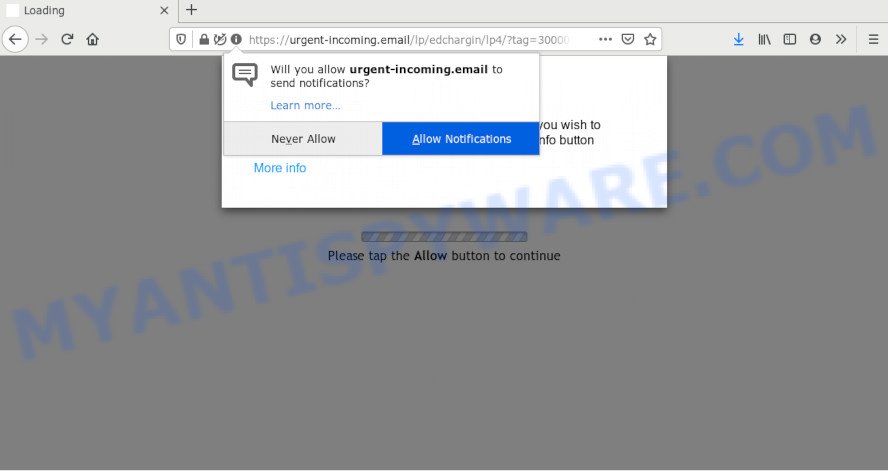
Once you click the ‘Allow’, then your web browser will be configured to display pop up advertisements in the lower right corner of the screen. Push notifications are originally made to alert the user of recently published content. Scammers abuse ‘browser notification feature’ to avoid antivirus software and adblocker apps by showing intrusive adverts. These advertisements are displayed in the lower right corner of the screen urges users to play online games, visit dubious webpages, install web-browser extensions & so on.

In order to remove Urgent-incoming.email push notifications open the internet browser’s settings and follow the Urgent-incoming.email removal steps below. Once you delete notifications subscription, the Urgent-incoming.email popups advertisements will no longer show on the desktop.
How did you get infected with Urgent-incoming.email pop-ups
These Urgent-incoming.email pop-ups are caused by suspicious advertisements on the web pages you visit or adware software. Adware is type of malware that presents undesired advertising on a PC, redirects search results to advertising web-sites and collects sensitive info for marketing purposes. Adware software can display banner advertisements, full-screen advertisements, popups, videos, or other varieties of online advertising. Adware software can attack your personal computer’s web browsers such as the Mozilla Firefox, Chrome, IE and MS Edge. Maybe you approve the idea that the ads or pop-ups is just a small problem. But these intrusive ads eat PC system resources and slow down your machine performance
Adware most likely to occur during the setup of free software due the fact that potentially unwanted software like this are mostly hidden in the installation package. Thus, if you have installed some freeware using Quick(Standard) method, you may have let adware get inside your computer. Keep in mind that the Quick mode is unreliable because it do not warn about additional software. Thus, third-party applications will be installed automatically unless you select Advanced/Custom method and disable its installation.
Threat Summary
| Name | Urgent-incoming.email pop-up |
| Type | browser notification spam advertisements, pop-up virus, pop up ads, popups |
| Distribution | PUPs, adwares, social engineering attack, misleading pop-up ads |
| Symptoms |
|
| Removal | Urgent-incoming.email removal guide |
We recommend you to delete adware and clean your computer from Urgent-incoming.email ads ASAP, until the presence of the adware has not led to even worse consequences. You need to follow the guide below that will allow you to completely get rid of the redirect to Urgent-incoming.email annoying web page, using only the built-in Microsoft Windows features and several free malicious software removal utilities of well-known antivirus software companies.
How to remove Urgent-incoming.email popup advertisements (removal steps)
We can assist you remove Urgent-incoming.email from your web browsers, without the need to take your PC system to a professional. Simply follow the removal tutorial below if you currently have the intrusive adware on your system and want to delete it. If you have any difficulty while trying to remove the adware software that cause pop-ups, feel free to ask for our help in the comment section below. Read it once, after doing so, please bookmark this page (or open it on your smartphone) as you may need to exit your browser or restart your PC.
To remove Urgent-incoming.email pop ups, execute the steps below:
- How to remove Urgent-incoming.email pop up advertisements without any software
- Remove dubious apps using Windows Control Panel
- Remove Urgent-incoming.email notifications from internet browsers
- Remove Urgent-incoming.email popup advertisements from Chrome
- Remove Urgent-incoming.email ads from Microsoft Internet Explorer
- Get rid of Urgent-incoming.email from Firefox by resetting internet browser settings
- How to automatically remove Urgent-incoming.email popups
- Stop Urgent-incoming.email pop-up advertisements
- Finish words
How to remove Urgent-incoming.email pop up advertisements without any software
First try to remove Urgent-incoming.email advertisements manually; to do this, follow the steps below. Of course, manual adware software removal requires more time and may not be suitable for those who are poorly versed in system settings. In this case, we recommend that you scroll down to the section that describes how to get rid of Urgent-incoming.email pop-ups using free tools.
Remove dubious apps using Windows Control Panel
First, go to Windows Control Panel and delete dubious applications, all programs you do not remember installing. It is important to pay the most attention to programs you installed just before Urgent-incoming.email pop-ups appeared on your web browser. If you do not know what a program does, look for the answer on the World Wide Web.
|
|
|
|
Remove Urgent-incoming.email notifications from internet browsers
Your internet browser likely now allows the Urgent-incoming.email web page to send you spam notifications, but you do not want the annoying ads from this web-site and we understand that. We have put together this instructions on how you can delete Urgent-incoming.email ads from Internet Explorer, Android, Safari, MS Edge, Firefox and Google Chrome.
Google Chrome:
- Just copy and paste the following text into the address bar of Google Chrome.
- chrome://settings/content/notifications
- Press Enter.
- Delete the Urgent-incoming.email site and other rogue notifications by clicking three vertical dots button next to each and selecting ‘Remove’.
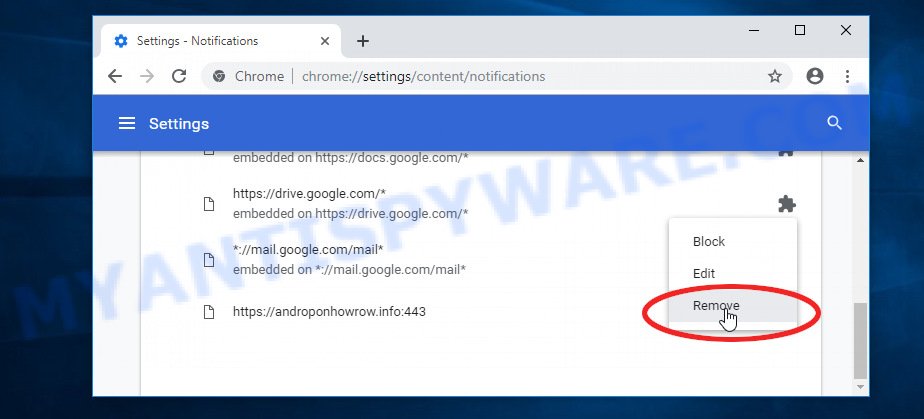
Android:
- Open Chrome.
- Tap on the Menu button (three dots) on the top right corner of the browser.
- In the menu tap ‘Settings’, scroll down to ‘Advanced’.
- In the ‘Site Settings’, tap on ‘Notifications’, find the Urgent-incoming.email site and tap on it.
- Tap the ‘Clean & Reset’ button and confirm.
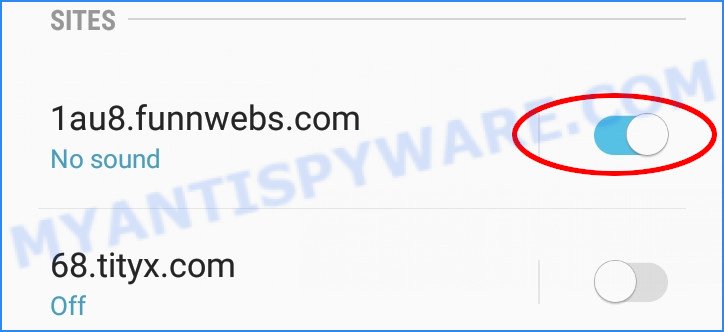
Mozilla Firefox:
- Click on ‘three bars’ button at the right upper corner of the browser window.
- In the drop-down menu select ‘Options’. In the left side select ‘Privacy & Security’.
- Scroll down to ‘Permissions’ and then to ‘Settings’ next to ‘Notifications’.
- Select the Urgent-incoming.email domain from the list and change the status to ‘Block’.
- Save changes.
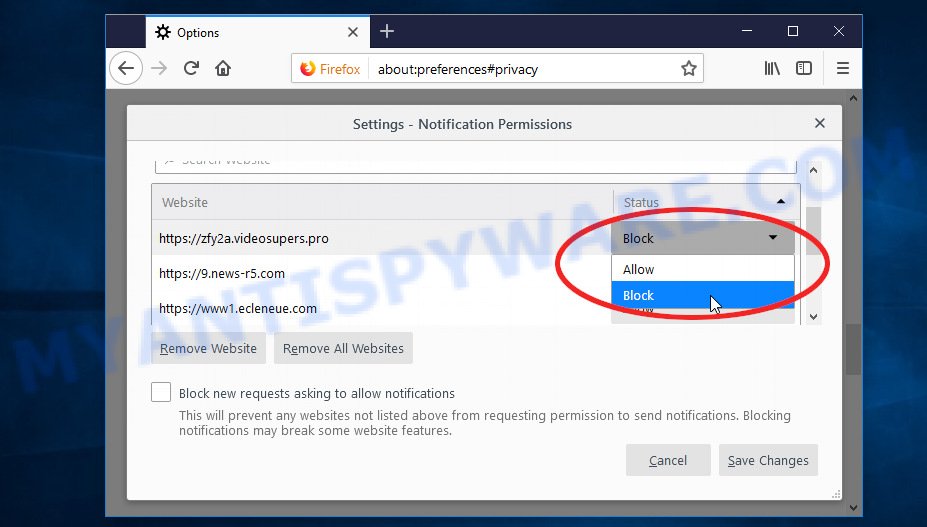
Edge:
- Click the More button (three dots) in the top right hand corner.
- Scroll down to ‘Settings’. In the menu on the left go to ‘Advanced’.
- Click ‘Manage permissions’ button below ‘Website permissions’.
- Right-click the Urgent-incoming.email URL. Click ‘Delete’.
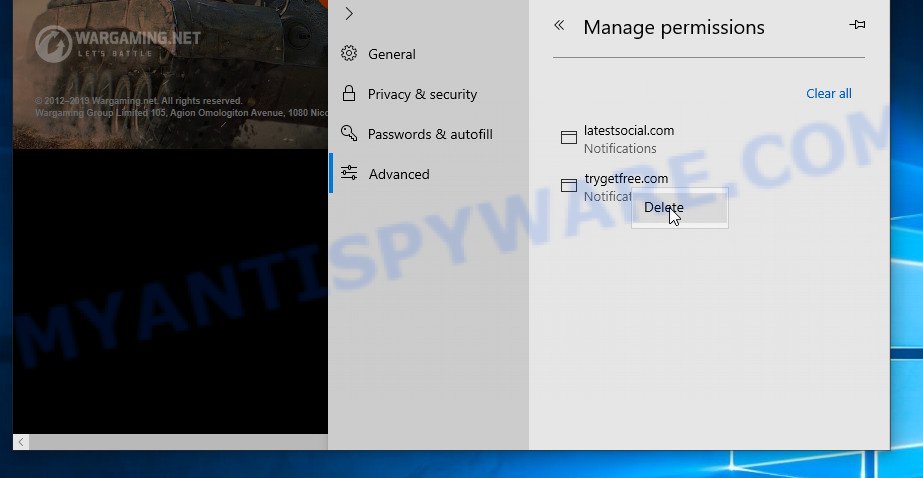
Internet Explorer:
- In the right upper corner, click on the gear icon (menu button).
- Go to ‘Internet Options’ in the menu.
- Click on the ‘Privacy’ tab and select ‘Settings’ in the pop-up blockers section.
- Find the Urgent-incoming.email URL and click the ‘Remove’ button to remove the URL.
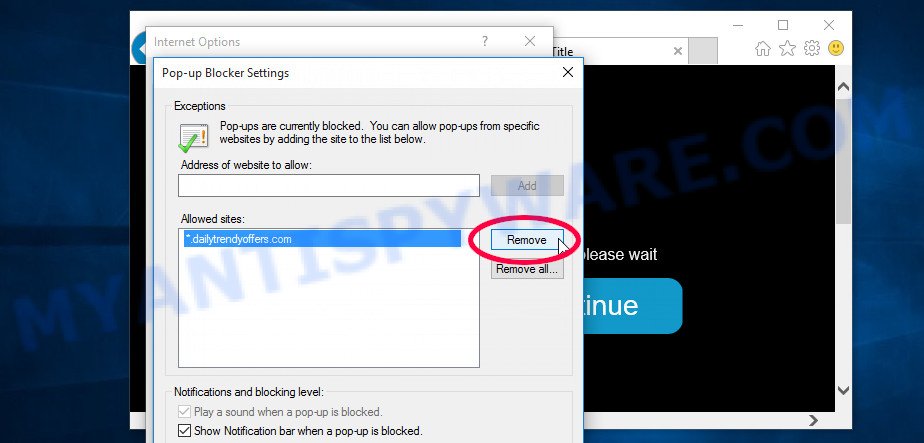
Safari:
- On the top menu select ‘Safari’, then ‘Preferences’.
- Select the ‘Websites’ tab and then select ‘Notifications’ section on the left panel.
- Find the Urgent-incoming.email site and select it, click the ‘Deny’ button.
Remove Urgent-incoming.email popup advertisements from Chrome
Reset Google Chrome will assist you to delete Urgent-incoming.email popup ads from your web browser as well as to restore browser settings infected by adware. All unwanted, malicious and adware plugins will also be removed from the web-browser. However, your saved passwords and bookmarks will not be changed, deleted or cleared.

- First, run the Chrome and click the Menu icon (icon in the form of three dots).
- It will open the Chrome main menu. Choose More Tools, then press Extensions.
- You’ll see the list of installed add-ons. If the list has the add-on labeled with “Installed by enterprise policy” or “Installed by your administrator”, then complete the following tutorial: Remove Chrome extensions installed by enterprise policy.
- Now open the Google Chrome menu once again, click the “Settings” menu.
- Next, press “Advanced” link, which located at the bottom of the Settings page.
- On the bottom of the “Advanced settings” page, click the “Reset settings to their original defaults” button.
- The Chrome will display the reset settings prompt as shown on the image above.
- Confirm the browser’s reset by clicking on the “Reset” button.
- To learn more, read the article How to reset Chrome settings to default.
Remove Urgent-incoming.email ads from Microsoft Internet Explorer
If you find that Internet Explorer internet browser settings like homepage, newtab and search provider had been modified by adware responsible for Urgent-incoming.email ads, then you may revert back your settings, via the reset web browser procedure.
First, run the Internet Explorer, click ![]() ) button. Next, click “Internet Options” as shown on the image below.
) button. Next, click “Internet Options” as shown on the image below.

In the “Internet Options” screen select the Advanced tab. Next, click Reset button. The Internet Explorer will display the Reset Internet Explorer settings dialog box. Select the “Delete personal settings” check box and press Reset button.

You will now need to restart your computer for the changes to take effect. It will remove adware responsible for Urgent-incoming.email ads, disable malicious and ad-supported browser’s extensions and restore the Internet Explorer’s settings like home page, new tab and default search provider to default state.
Get rid of Urgent-incoming.email from Firefox by resetting internet browser settings
If the Firefox internet browser is re-directed to Urgent-incoming.email and you want to recover the Firefox settings back to their original settings, then you should follow the steps below. It’ll save your personal information such as saved passwords, bookmarks, auto-fill data and open tabs.
First, start the Mozilla Firefox and click ![]() button. It will show the drop-down menu on the right-part of the browser. Further, click the Help button (
button. It will show the drop-down menu on the right-part of the browser. Further, click the Help button (![]() ) as displayed on the image below.
) as displayed on the image below.

In the Help menu, select the “Troubleshooting Information” option. Another way to open the “Troubleshooting Information” screen – type “about:support” in the web-browser adress bar and press Enter. It will open the “Troubleshooting Information” page as shown in the figure below. In the upper-right corner of this screen, click the “Refresh Firefox” button.

It will open the confirmation dialog box. Further, press the “Refresh Firefox” button. The Mozilla Firefox will begin a procedure to fix your problems that caused by the Urgent-incoming.email adware. When, it’s complete, click the “Finish” button.
How to automatically remove Urgent-incoming.email popups
Spyware, adware, PUPs and hijacker infections can be difficult to delete manually. Do not try to remove this software without the help of malware removal tools. In order to fully delete adware software from your system, use professionally made utilities, like Zemana AntiMalware, MalwareBytes Free and HitmanPro.
Run Zemana Free to delete Urgent-incoming.email pop up ads
Zemana AntiMalware (ZAM) is an amazing tool to get rid of Urgent-incoming.email pop up ads from the Google Chrome, Microsoft Edge, IE and Firefox. It also removes malicious software and adware software from your PC. It improves your system’s performance by uninstalling potentially unwanted software.
Installing the Zemana Free is simple. First you will need to download Zemana Free by clicking on the following link.
164815 downloads
Author: Zemana Ltd
Category: Security tools
Update: July 16, 2019
When the downloading process is done, close all applications and windows on your computer. Open a directory in which you saved it. Double-click on the icon that’s called Zemana.AntiMalware.Setup as shown on the image below.
![]()
When the install begins, you will see the “Setup wizard” that will allow you install Zemana Anti-Malware on your computer.

Once install is complete, you will see window as displayed on the image below.

Now click the “Scan” button to start checking your system for the adware related to the Urgent-incoming.email pop-up ads. While the Zemana Free tool is checking, you can see count of objects it has identified as being infected by malicious software.

Once that process is complete, you will be displayed the list of all found threats on your computer. Review the report and then click “Next” button.

The Zemana Free will delete adware that causes multiple undesired popups and add items to the Quarantine.
Scan your system and remove Urgent-incoming.email pop ups with HitmanPro
Hitman Pro is a free removal utility that can check your computer for a wide range of security threats like malicious software, adwares, PUPs as well as adware software that causes Urgent-incoming.email popups. It will perform a deep scan of your personal computer including hard drives and Windows registry. Once a malicious software is detected, it will allow you to remove all found threats from your system by a simple click.
Click the following link to download the latest version of Hitman Pro for Windows. Save it on your Desktop.
Download and use HitmanPro on your machine. Once started, press “Next” button . HitmanPro program will scan through the whole system for the adware software that cause pop-ups. When a threat is detected, the number of the security threats will change accordingly. Wait until the the checking is complete..
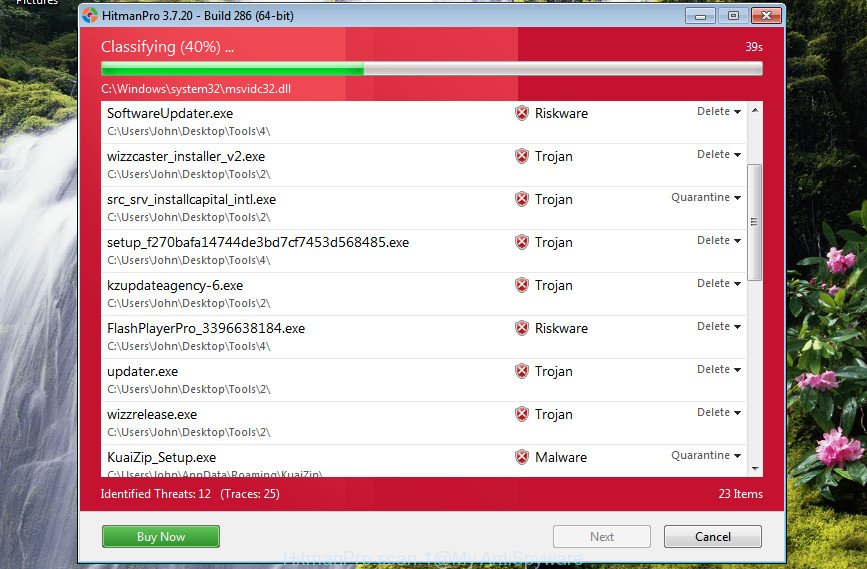
After Hitman Pro has finished scanning, you can check all threats found on your system.
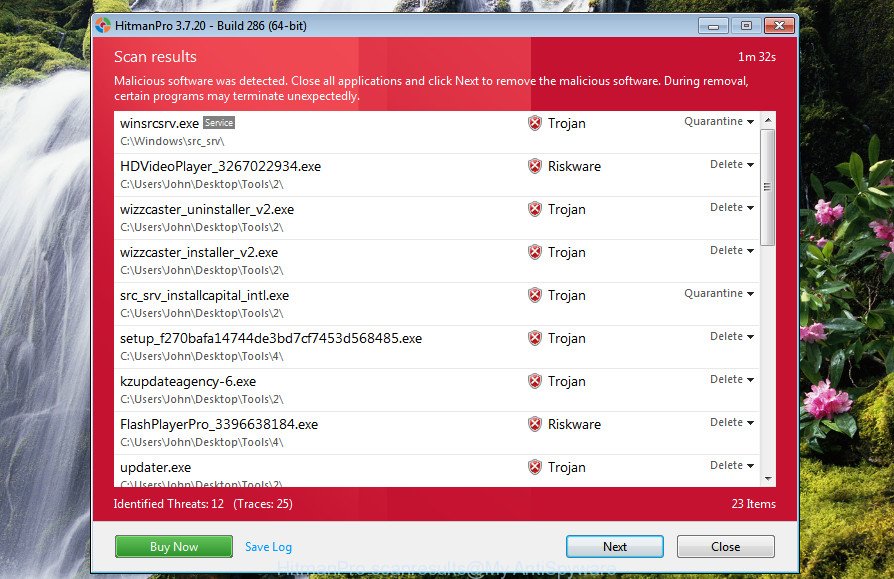
Review the report and then press Next button.
It will show a dialog box, click the “Activate free license” button to start the free 30 days trial to remove all malware found.
Get rid of Urgent-incoming.email pop-up advertisements with MalwareBytes Anti Malware
If you’re still having issues with the Urgent-incoming.email popup advertisements — or just wish to scan your PC system occasionally for adware software and other malicious software — download MalwareBytes Free. It’s free for home use, and identifies and removes various undesired software that attacks your PC or degrades PC system performance. MalwareBytes Anti Malware (MBAM) can get rid of adware software, potentially unwanted apps as well as malware, including ransomware and trojans.
Visit the page linked below to download the latest version of MalwareBytes Anti Malware (MBAM) for Microsoft Windows. Save it on your Windows desktop.
327072 downloads
Author: Malwarebytes
Category: Security tools
Update: April 15, 2020
When the downloading process is complete, close all windows on your PC system. Further, run the file named mb3-setup. If the “User Account Control” dialog box pops up as shown on the screen below, click the “Yes” button.
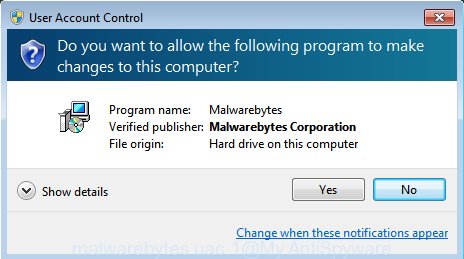
It will open the “Setup wizard” which will assist you setup MalwareBytes AntiMalware on the PC system. Follow the prompts and don’t make any changes to default settings.
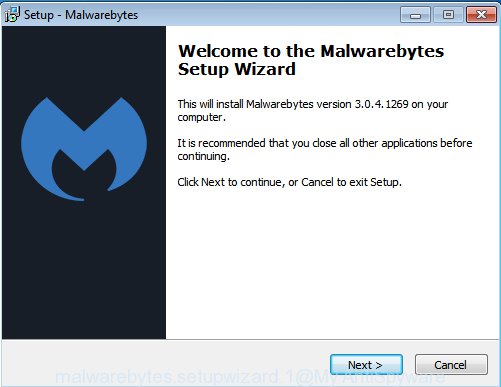
Once setup is done successfully, press Finish button. Then MalwareBytes AntiMalware (MBAM) will automatically launch and you may see its main window as displayed in the figure below.
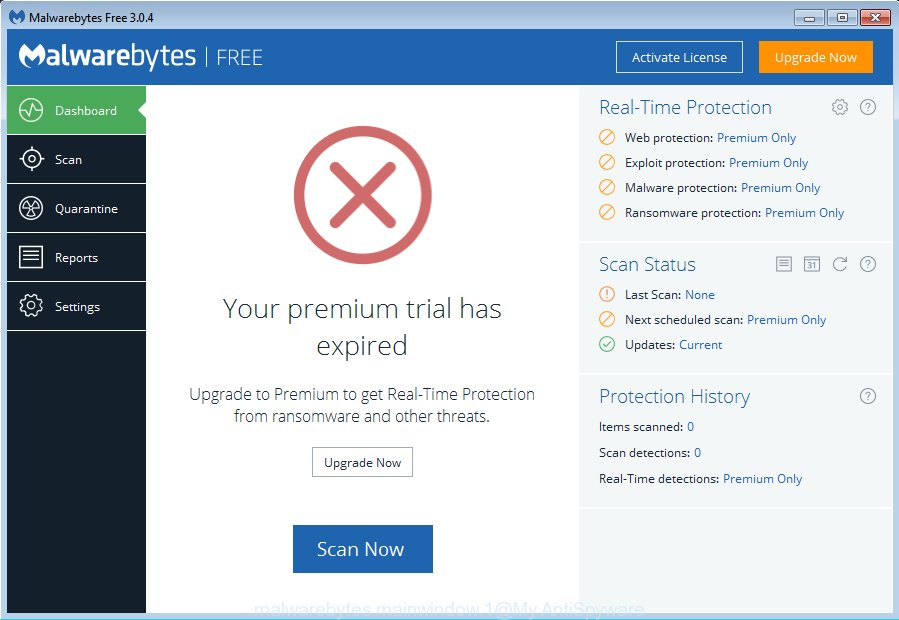
Next, click the “Scan Now” button to perform a system scan for the adware software responsible for Urgent-incoming.email advertisements. A system scan can take anywhere from 5 to 30 minutes, depending on your PC system. When a malicious software, adware or potentially unwanted apps are detected, the count of the security threats will change accordingly. Wait until the the checking is complete.
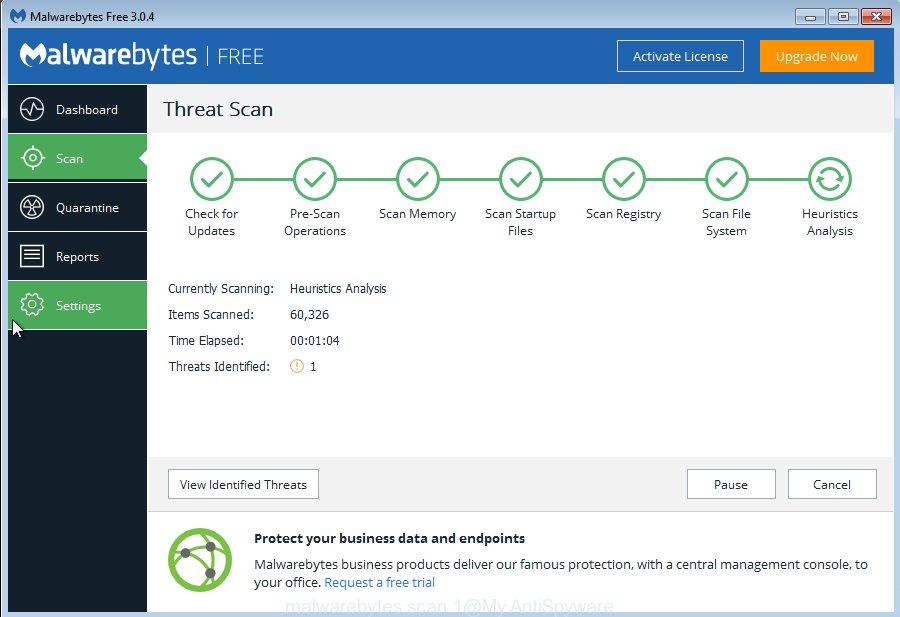
As the scanning ends, you can check all threats detected on your machine. You may delete items (move to Quarantine) by simply click “Quarantine Selected” button.
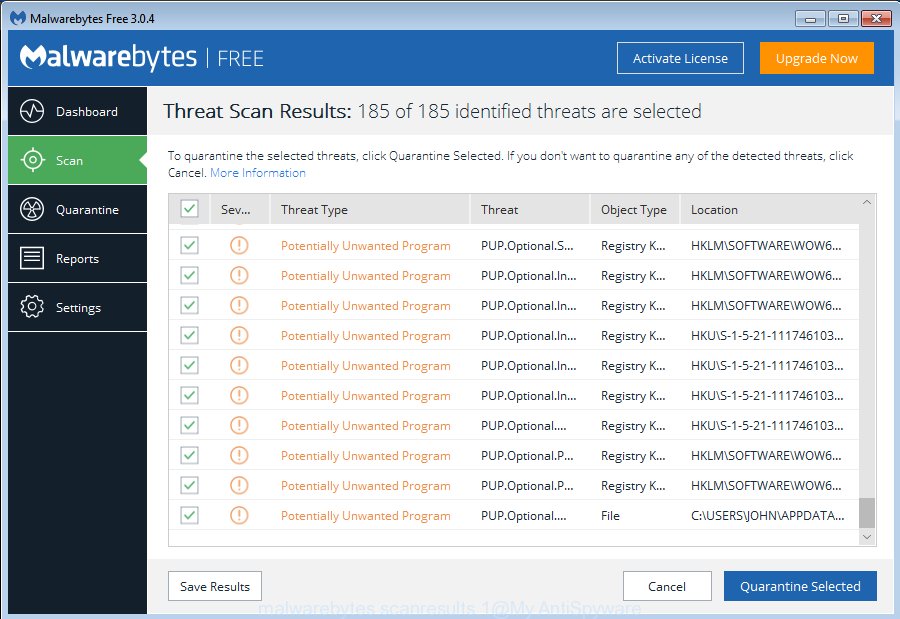
The MalwareBytes Free will remove adware software that cause pop-ups and move items to the program’s quarantine. When finished, you can be prompted to reboot your machine. We suggest you look at the following video, which completely explains the process of using the MalwareBytes Free to remove hijackers, adware software and other malware.
Stop Urgent-incoming.email pop-up advertisements
It’s important to use ad blocker software like AdGuard to protect your computer from malicious webpages. Most security experts says that it’s okay to block advertisements. You should do so just to stay safe! And, of course, the AdGuard can to stop Urgent-incoming.email and other undesired web pages.
- Click the following link to download AdGuard. Save it to your Desktop.
Adguard download
26843 downloads
Version: 6.4
Author: © Adguard
Category: Security tools
Update: November 15, 2018
- Once downloading is complete, start the downloaded file. You will see the “Setup Wizard” program window. Follow the prompts.
- When the installation is complete, click “Skip” to close the install program and use the default settings, or click “Get Started” to see an quick tutorial that will help you get to know AdGuard better.
- In most cases, the default settings are enough and you don’t need to change anything. Each time, when you run your computer, AdGuard will run automatically and stop unwanted advertisements, block Urgent-incoming.email, as well as other harmful or misleading web sites. For an overview of all the features of the application, or to change its settings you can simply double-click on the icon named AdGuard, which is located on your desktop.
Finish words
Now your personal computer should be free of the adware that causes multiple intrusive pop-ups. We suggest that you keep AdGuard (to help you stop unwanted pop-up advertisements and annoying harmful web-pages) and Zemana (to periodically scan your machine for new adwares and other malicious software). Probably you are running an older version of Java or Adobe Flash Player. This can be a security risk, so download and install the latest version right now.
If you are still having problems while trying to remove Urgent-incoming.email ads from the Internet Explorer, Microsoft Edge, Mozilla Firefox and Google Chrome, then ask for help here here.



















Thanks for sharing such a piece of useful information.